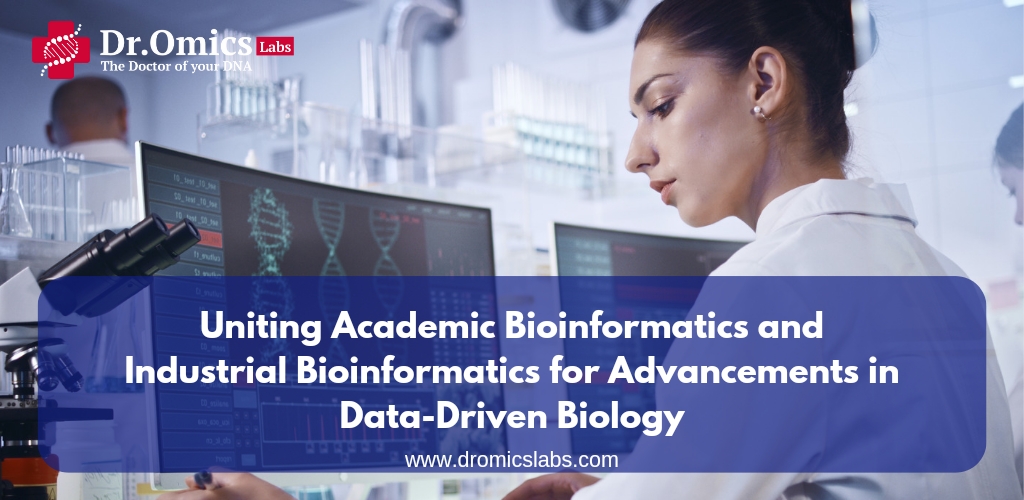Pharmacogenomics is the study of how genetic variations affect drug response and toxicity in individuals and populations. It aims to optimize drug therapy by tailoring the right drug, dose, and regimen for each patient based on their genetic profile. Pharmacogenomics has the potential to improve patient outcomes, reduce adverse drug reactions, and lower healthcare costs.
However, pharmacogenomics is a complex and challenging field that requires the integration and analysis of large amounts of data from multiple sources, such as genomic sequences, gene expression, drug metabolism, clinical trials, and electronic health records. This is where bioinformatics comes in. Bioinformatics is the application of computational methods and tools to biological problems, such as storing, retrieving, processing, and interpreting biological data.
Bioinformatics : Key role in Pharmacogenomics
Data mining and management: Bioinformatics helps to collect, organize, and store the vast amount of pharmacogenomic data from various sources, such as public databases, literature, and clinical studies. Bioinformatics also helps to extract relevant information and knowledge from the data using various techniques, such as text mining, natural language processing, and machine learning.
Data integration and analysis: Bioinformatics helps to integrate and analyze the pharmacogenomic data from different levels, such as genes, proteins, pathways, networks, and phenotypes. Bioinformatics also helps to identify and validate biomarkers, such as genetic variants, gene expression, and metabolites, that are associated with drug response and toxicity. Bioinformatics also helps to model and simulate the pharmacokinetic and pharmacodynamic processes of drugs in the body, taking into account the genetic and environmental factors.
Data visualization and interpretation: Bioinformatics helps to visualize and interpret the pharmacogenomic data and results using various tools, such as graphs, charts, tables, maps, and networks. Bioinformatics also helps to communicate and disseminate the pharmacogenomic findings and implications to various stakeholders, such as researchers, clinicians, patients, and regulators.
Bioinformatics and pharmacogenomics are complementary and interdependent fields that work together to advance the field of personalized medicine. By combining the power of bioinformatics and pharmacogenomics, we can achieve a better understanding of the molecular mechanisms of drug action and variation, and ultimately, provide more effective and safer drug therapy for each individual.
Challenges and Opportunities in Bioinformatics and Pharmacogenomics
Despite the significant progress and potential of bioinformatics and pharmacogenomics, there are still many challenges and opportunities in this field.
Some of the major challenges include:
Data quality and standardization: The pharmacogenomic data are often heterogeneous, incomplete, noisy, and inconsistent, which pose difficulties for data mining and analysis. Moreover, there is a lack of common standards and formats for data representation, annotation, and exchange, which hamper data integration and sharing. Therefore, there is a need for improving the data quality and standardization, as well as developing and adopting common ontologies, vocabularies, and protocols for pharmacogenomic data.
Data privacy and security: The pharmacogenomic data are sensitive and personal, as they contain information about the genetic makeup and health status of individuals. Therefore, there is a need for ensuring the data privacy and security, as well as respecting the ethical and legal issues related to data collection, storage, access, and use. Moreover, there is a need for balancing the data privacy and security with the data availability and utility, as well as fostering the trust and consent of the data providers and users.
Data interpretation and translation: The pharmacogenomic data are complex and multidimensional, which require sophisticated methods and tools for data interpretation and translation. Moreover, there is a gap between the data generation and the data application, as well as between the basic research and the clinical practice. Therefore, there is a need for developing and validating reliable and robust methods and tools for data interpretation and translation, as well as bridging the gap between the bench and the bedside, and between the academia and the industry.
On the other hand, some of the major opportunities include:
Data integration and analysis: The pharmacogenomic data are rich and diverse, which offer opportunities for data integration and analysis. By integrating and analyzing the data from different sources, levels, and domains, we can gain more comprehensive and holistic insights into the pharmacogenomic phenomena and mechanisms. Moreover, by applying advanced techniques, such as artificial intelligence, machine learning, and deep learning, we can discover novel and hidden patterns and associations in the data, as well as generate and test new hypotheses and predictions.
Data visualization and communication: The pharmacogenomic data are informative and valuable, which offer opportunities for data visualization and communication. By visualizing and communicating the data and results in an effective and interactive way, we can enhance the data understanding and interpretation, as well as facilitate the data dissemination and utilization. Moreover, by engaging and collaborating with various stakeholders, such as researchers, clinicians, patients, and regulators, we can foster the data awareness and education, as well as promote the data feedback and improvement.
Data innovation and application: The pharmacogenomic data are powerful and impactful, which offer opportunities for data innovation and application. By innovating and applying the data and knowledge in various scenarios and contexts, we can create and deliver new and improved products and services, such as personalized drugs, diagnostics, and therapeutics. Moreover, by evaluating and demonstrating the data and outcomes in various settings and populations, we can assess and improve the data quality and utility, as well as measure and optimize the data benefits and value.
Conclusion
Bioinformatics and pharmacogenomics are two emerging and promising fields that have the potential to revolutionize the field of personalized medicine. By leveraging the power of bioinformatics and pharmacogenomics, we can achieve a better understanding of the molecular mechanisms of drug action and variation, and ultimately, provide more effective and safer drug therapy for each individual. However, there are still many challenges and opportunities in this field that require further research and development, as well as collaboration and coordination among various disciplines and sectors. By overcoming the challenges and seizing the opportunities, we can make bioinformatics and pharmacogenomics a reality and a success for personalized medicine.




